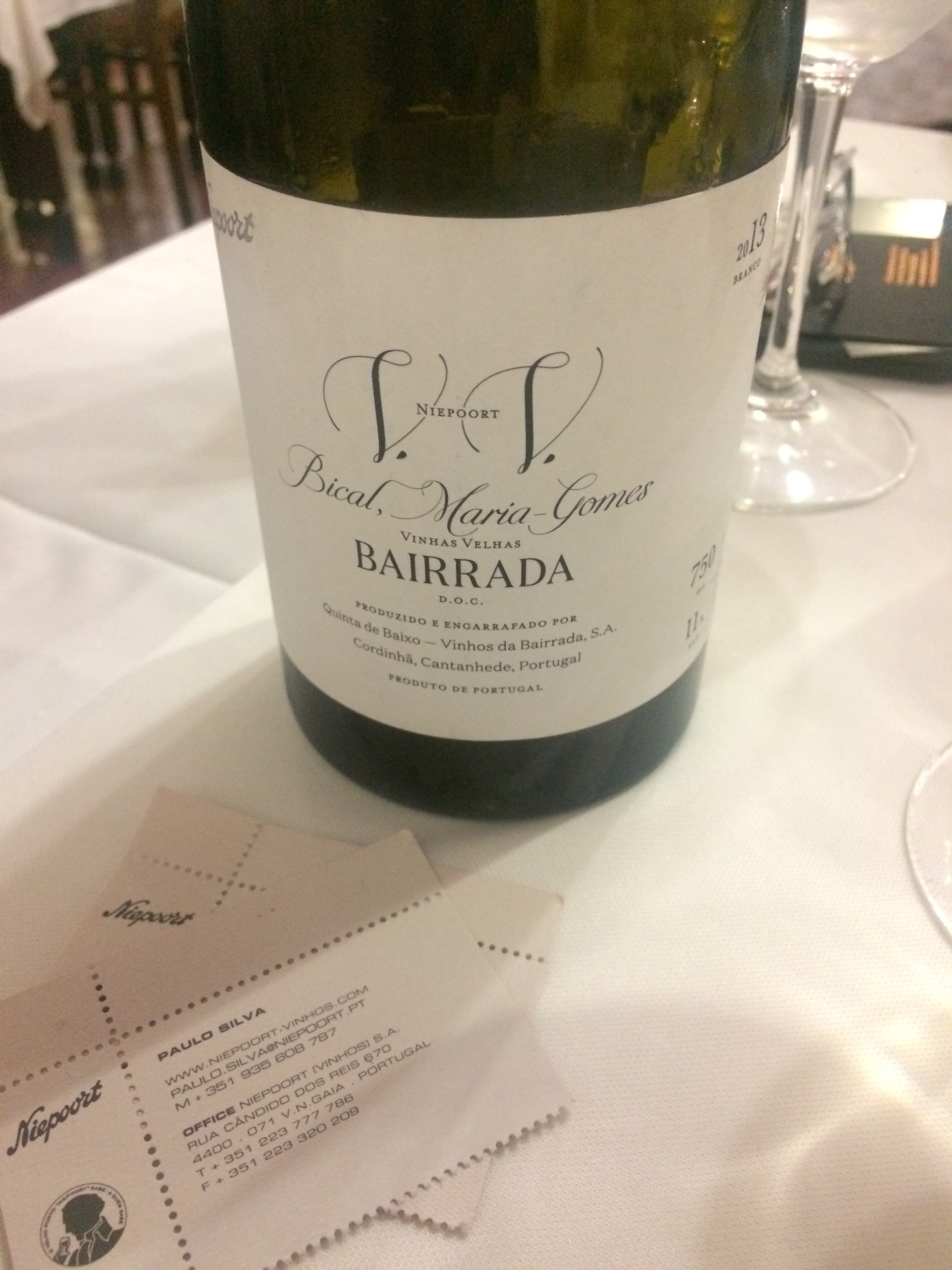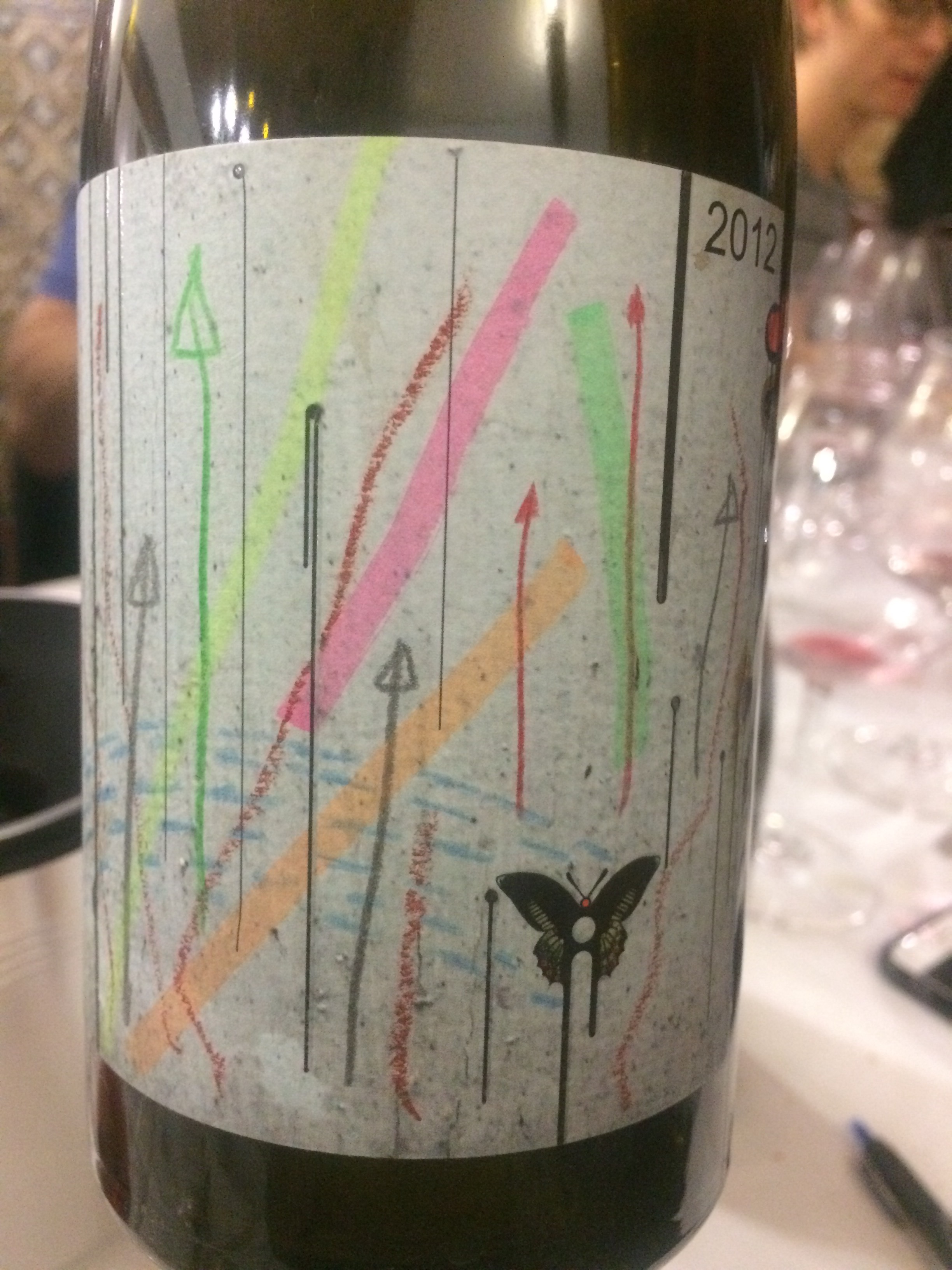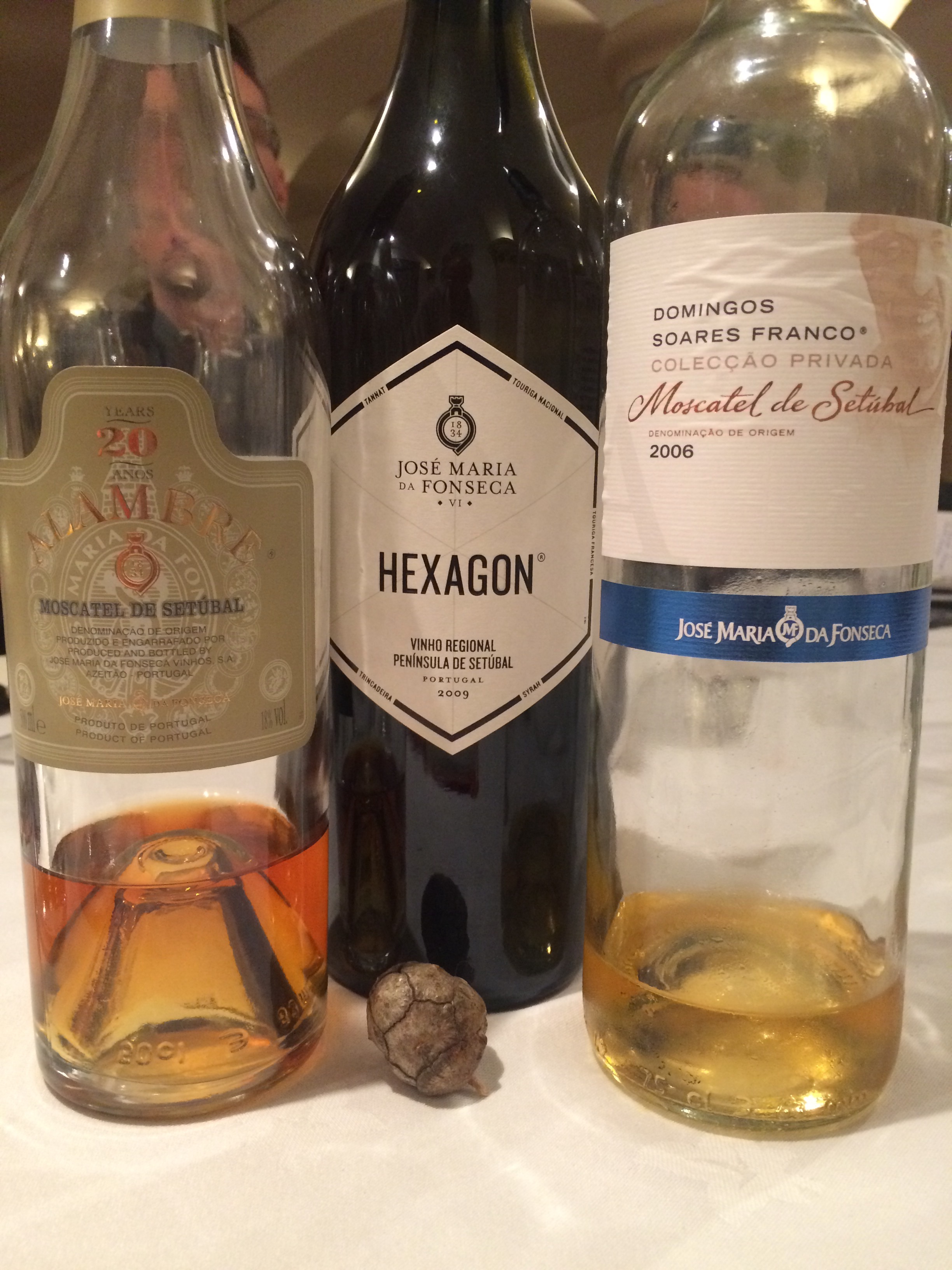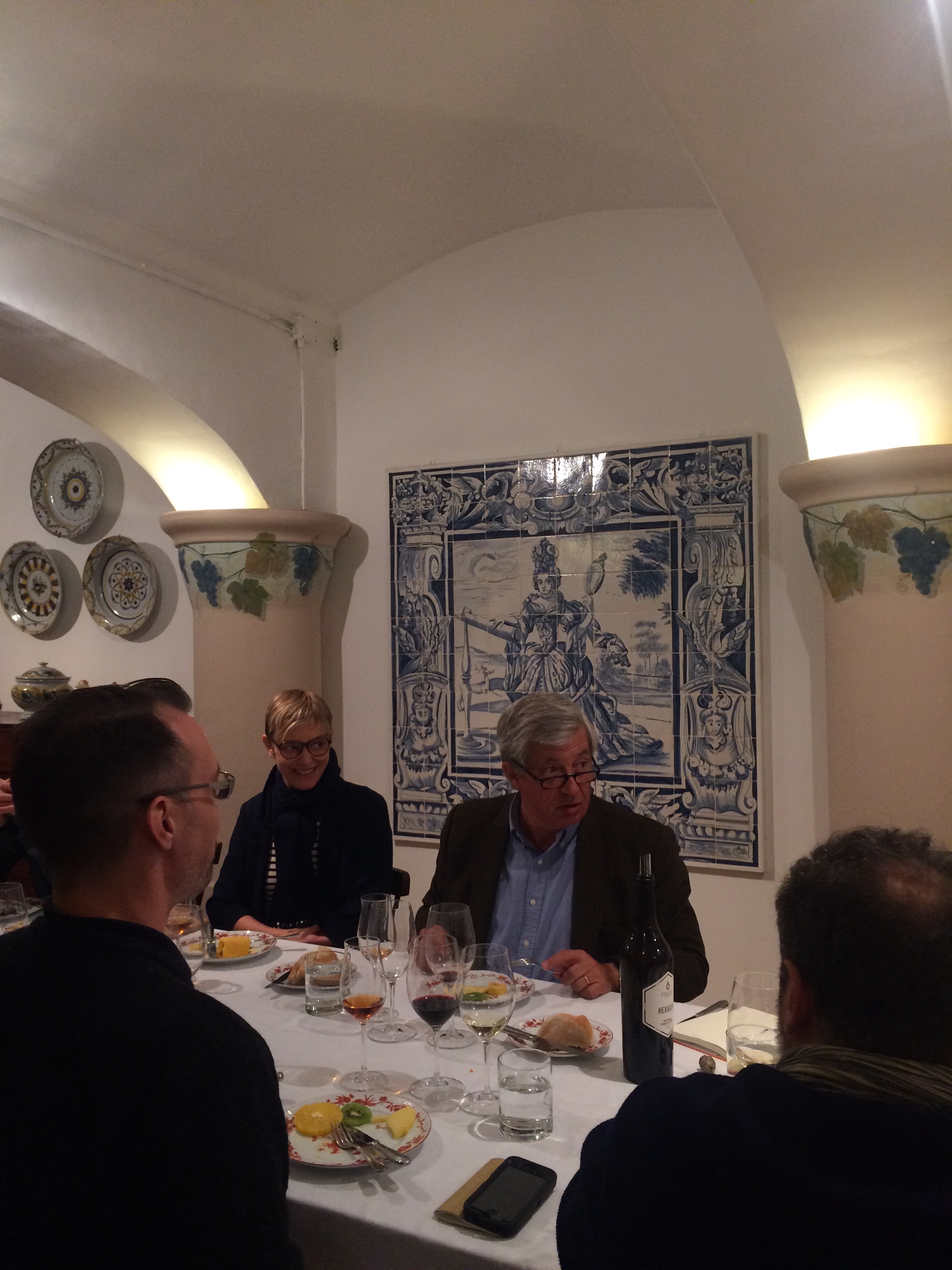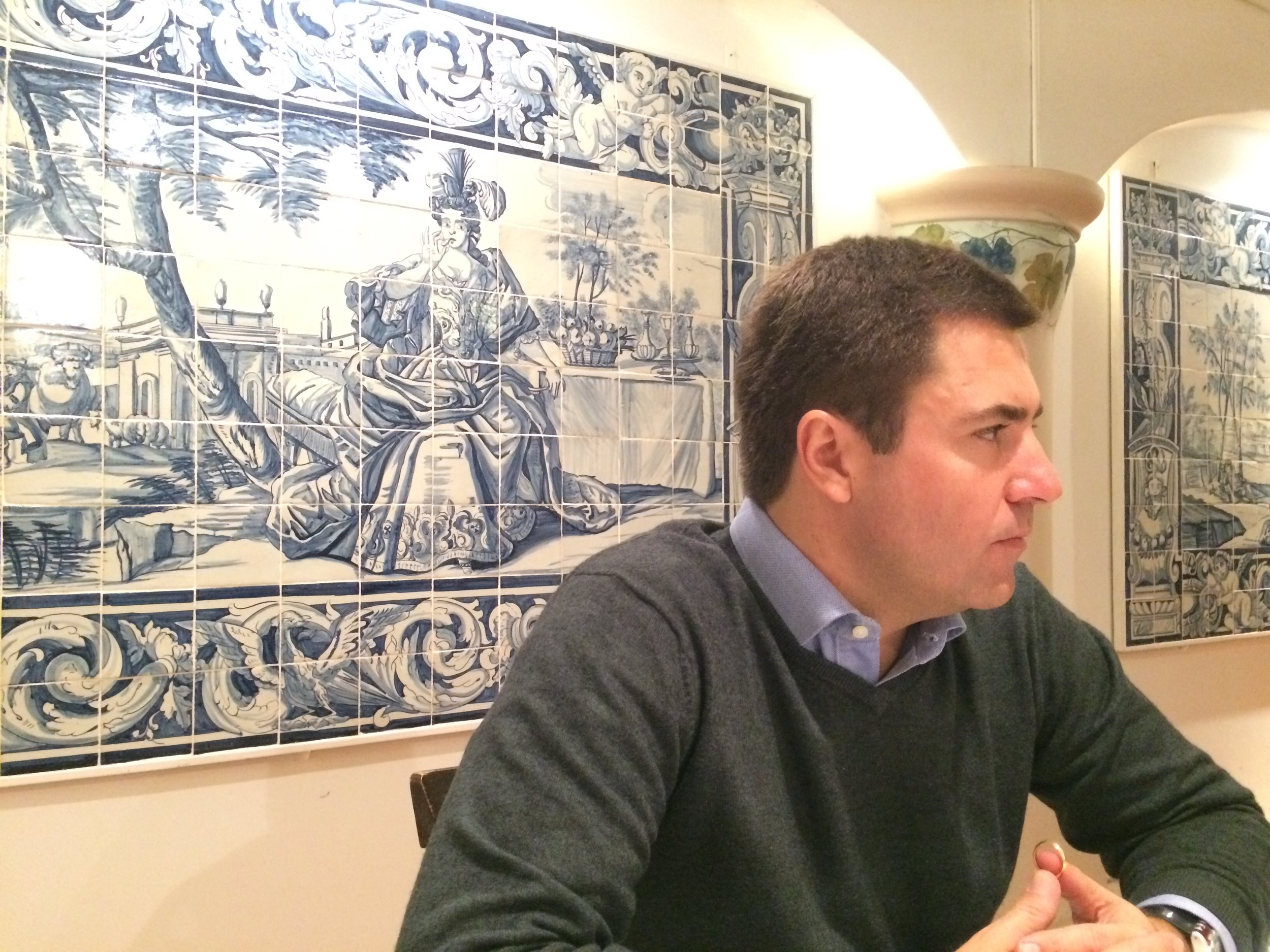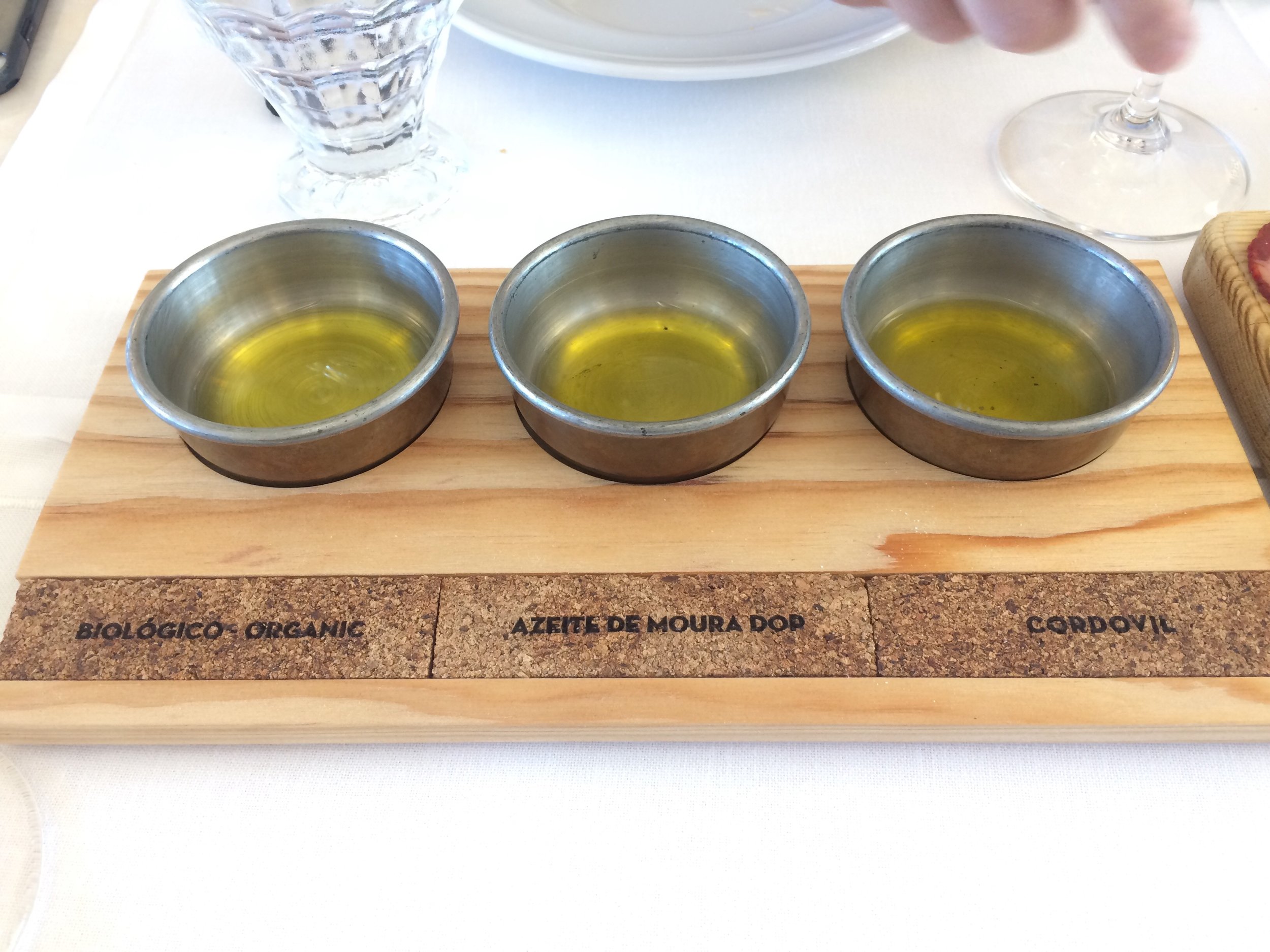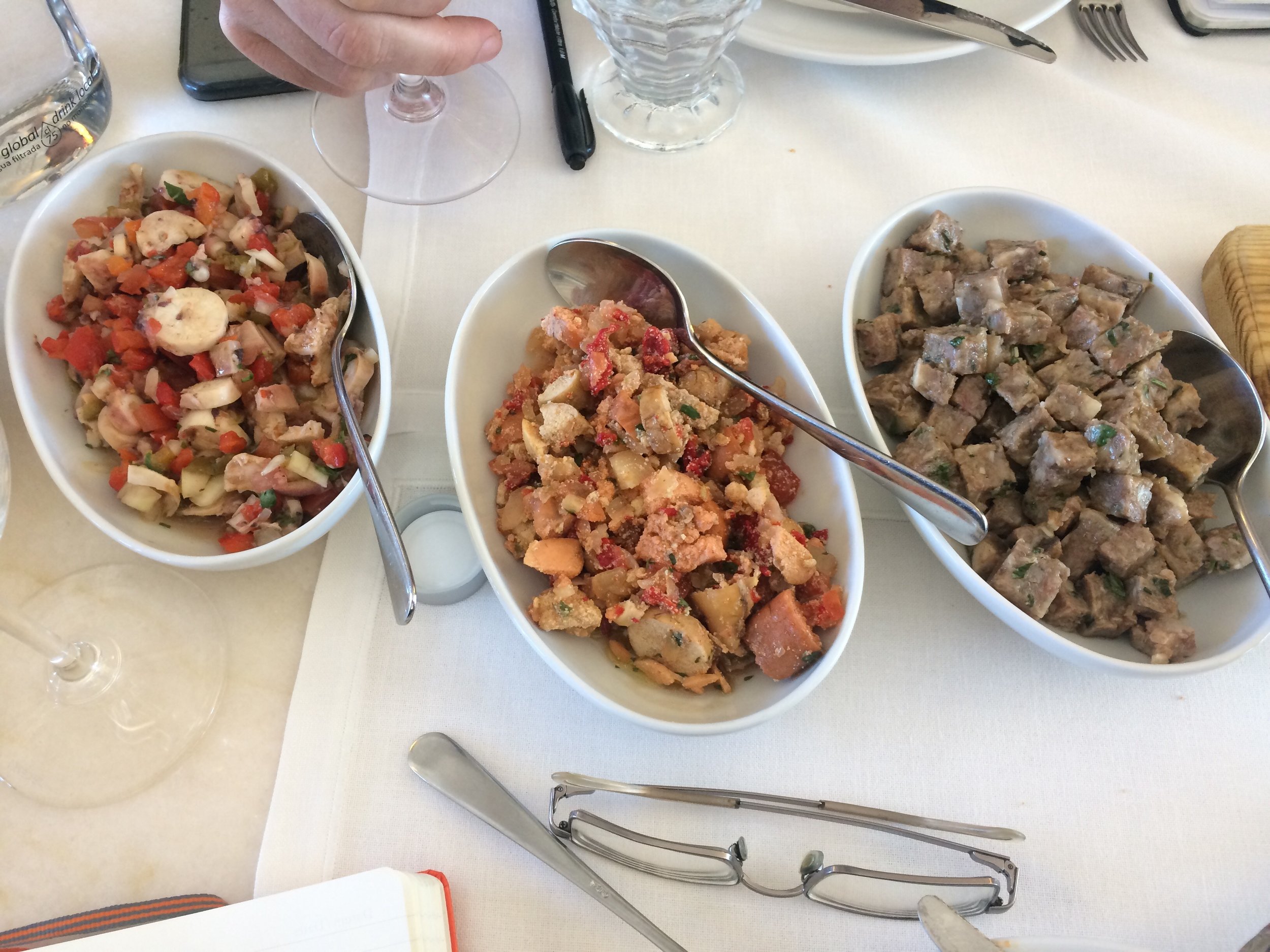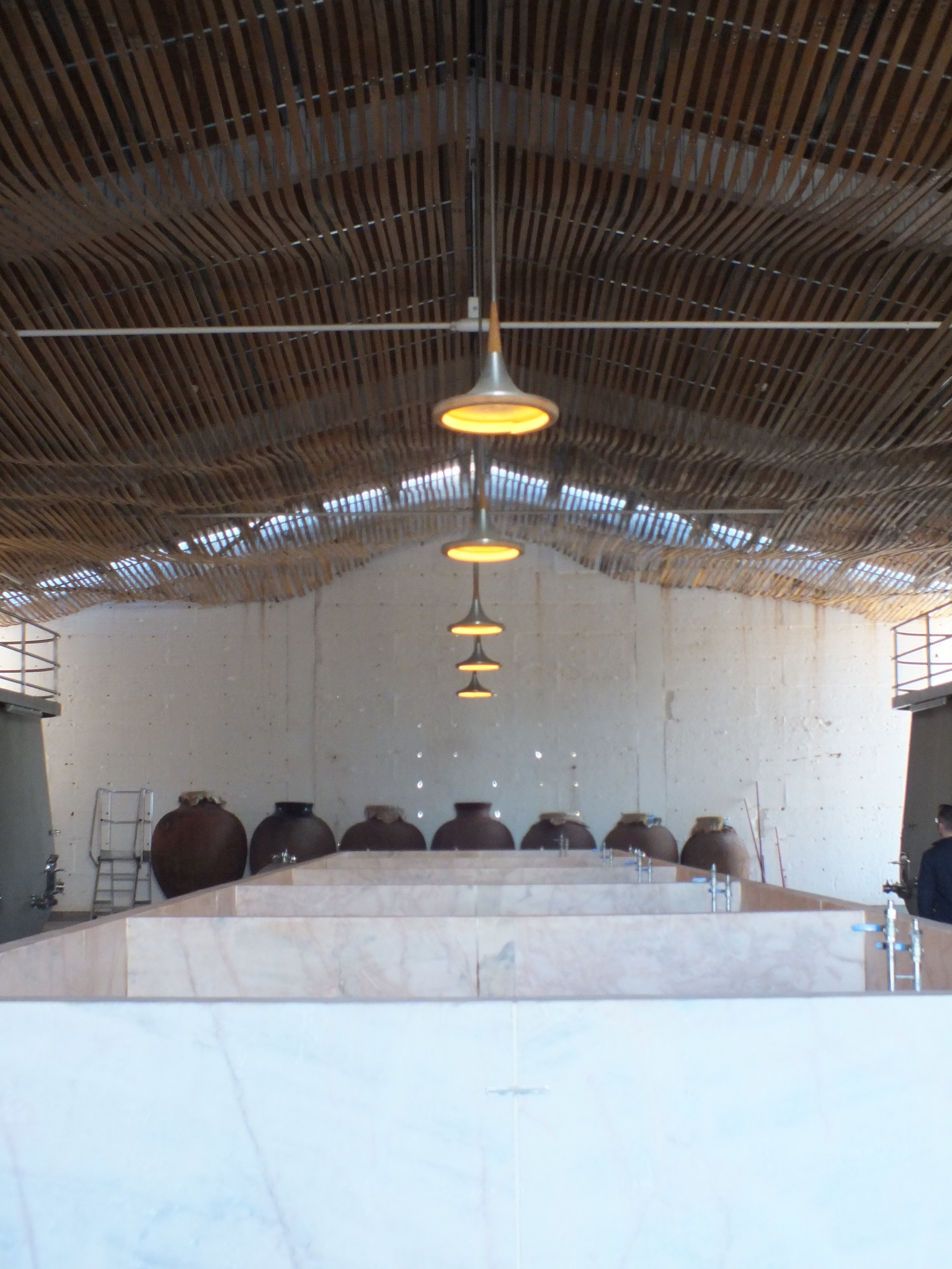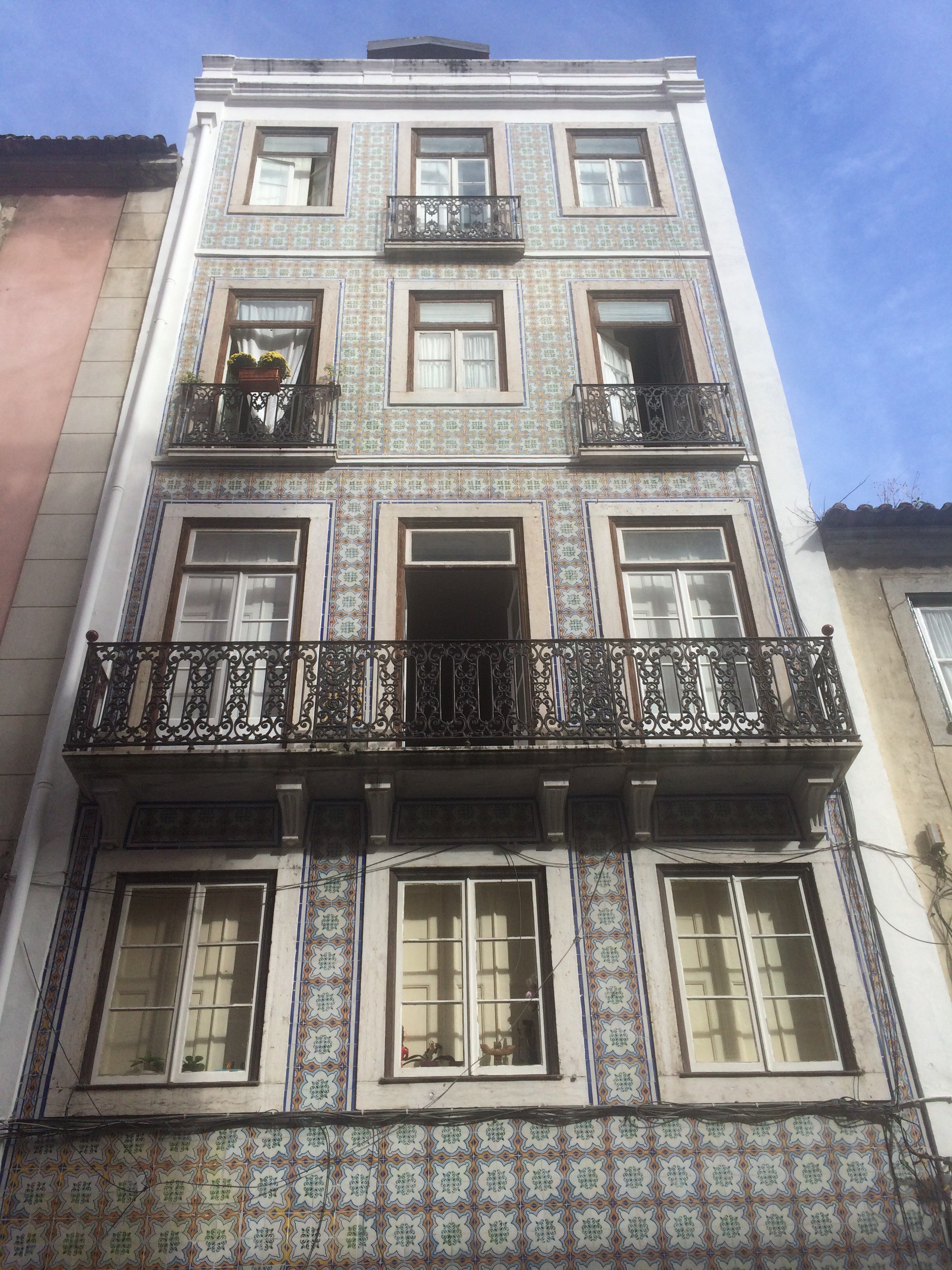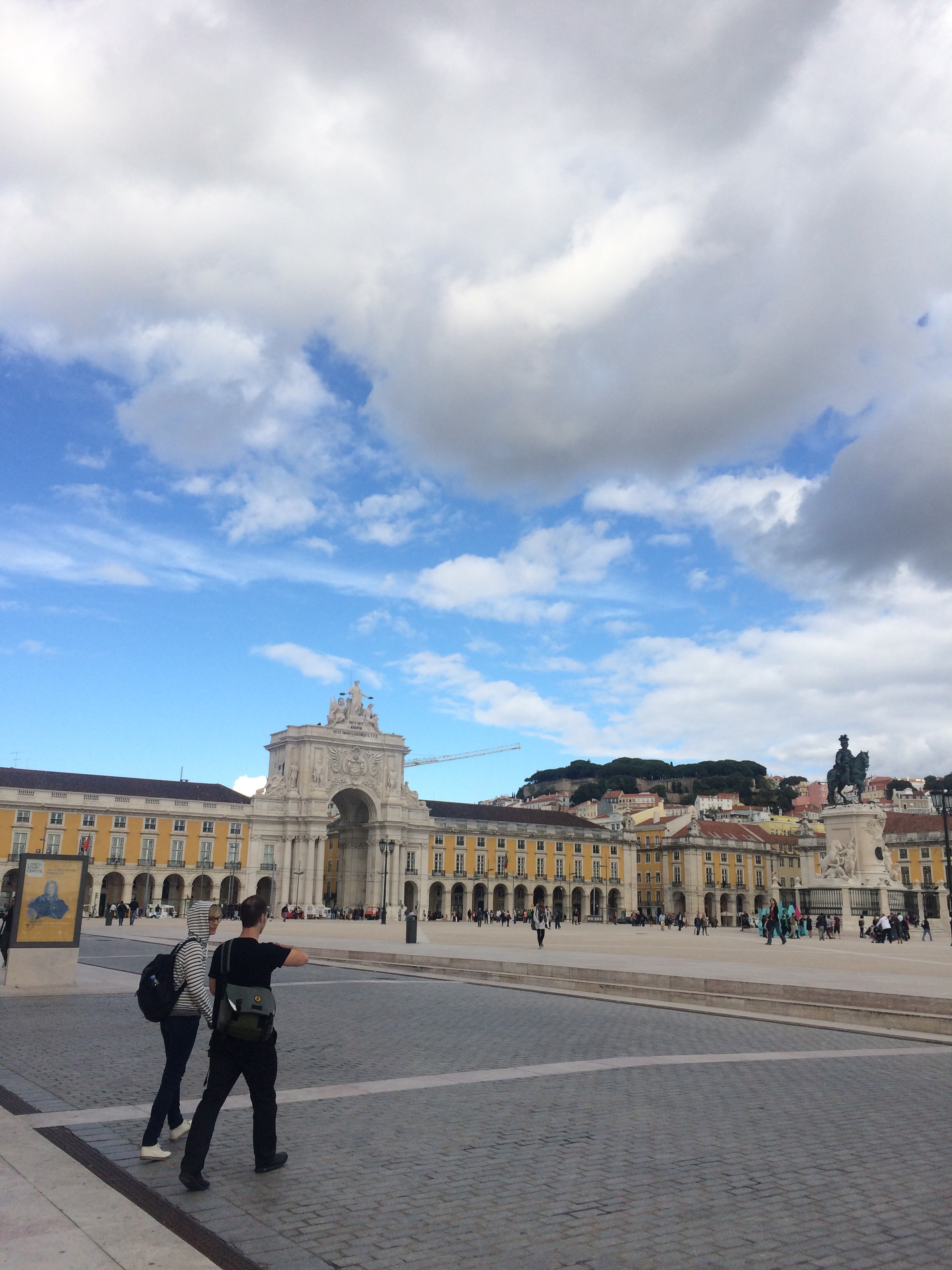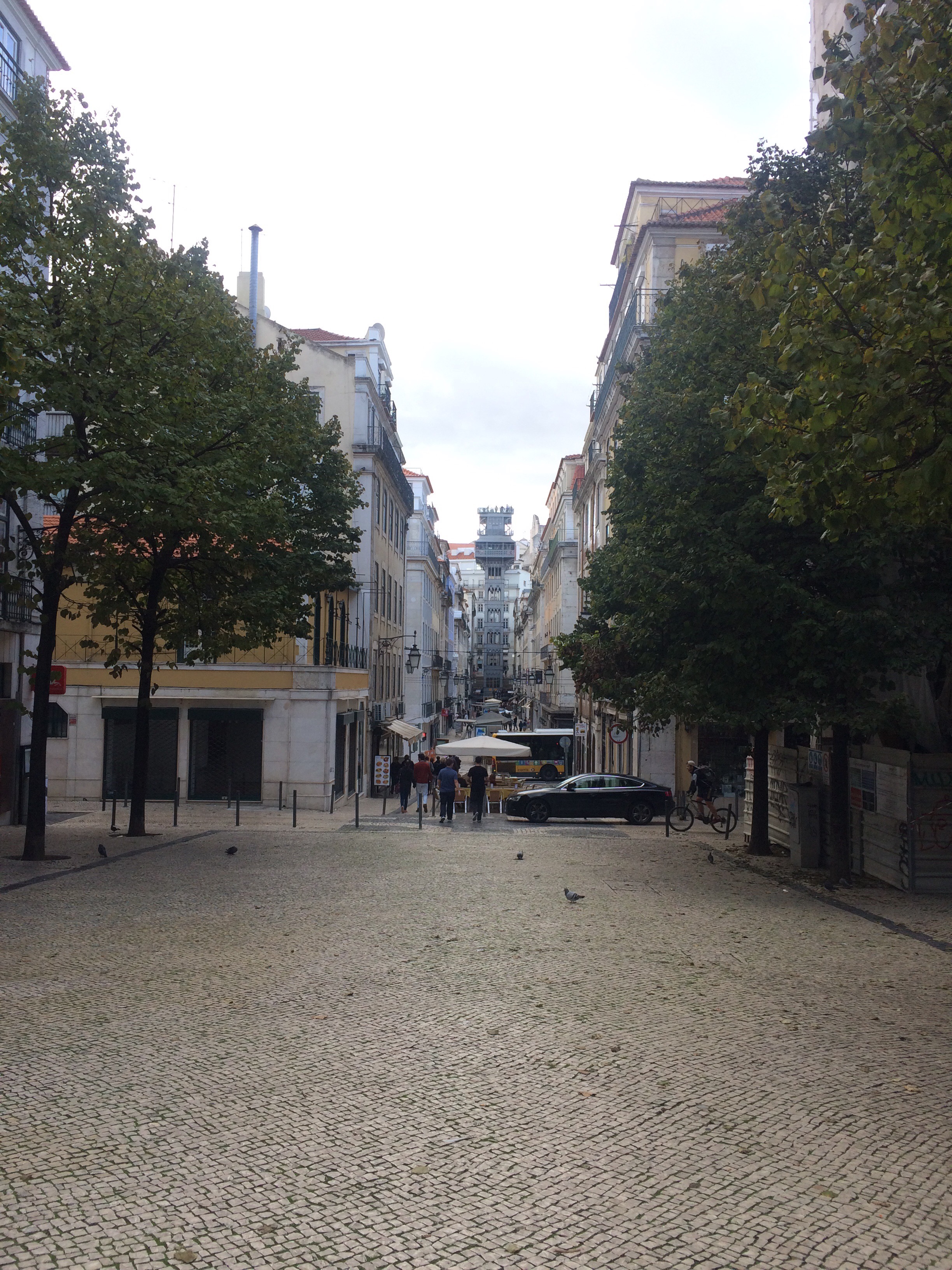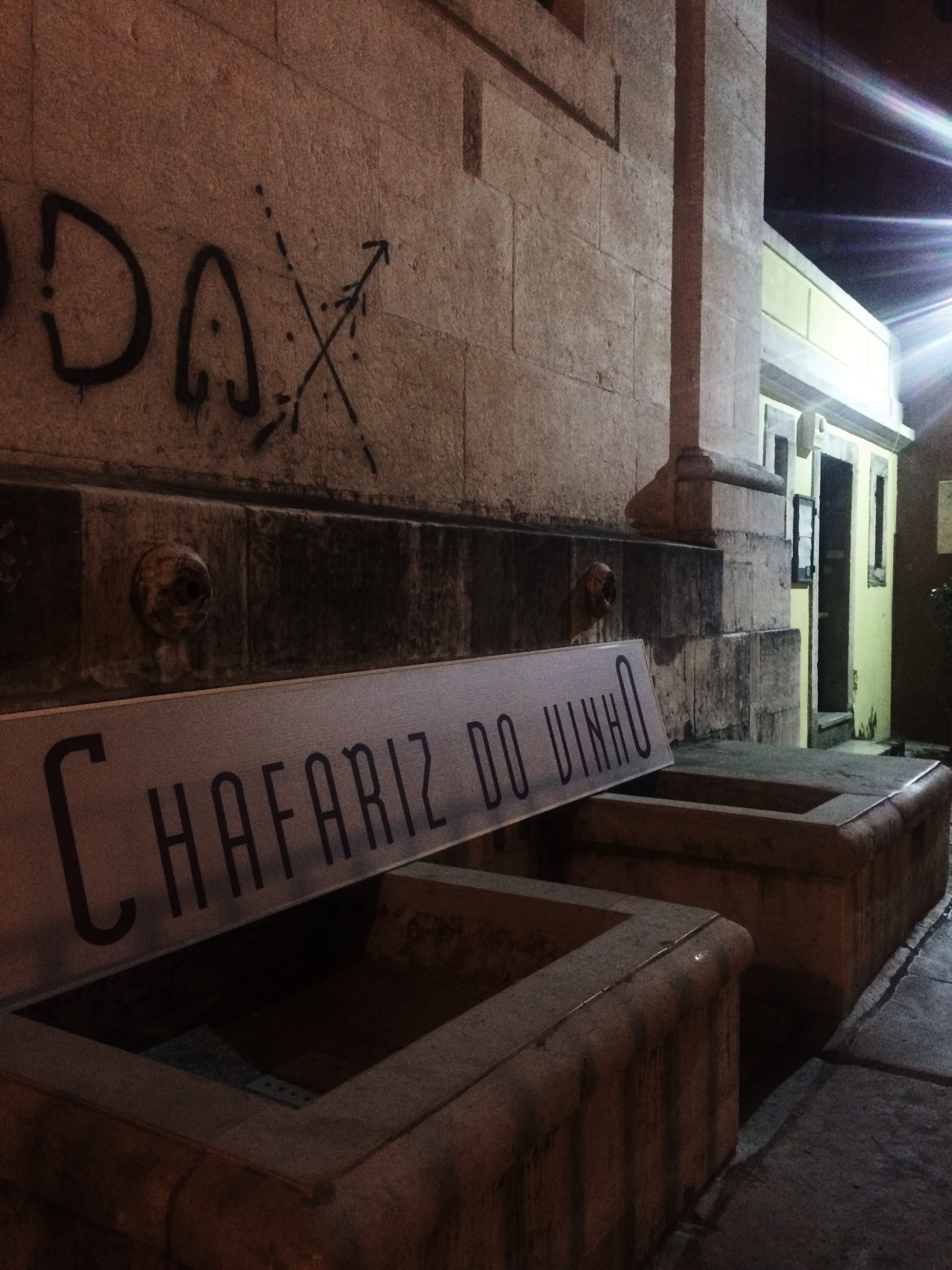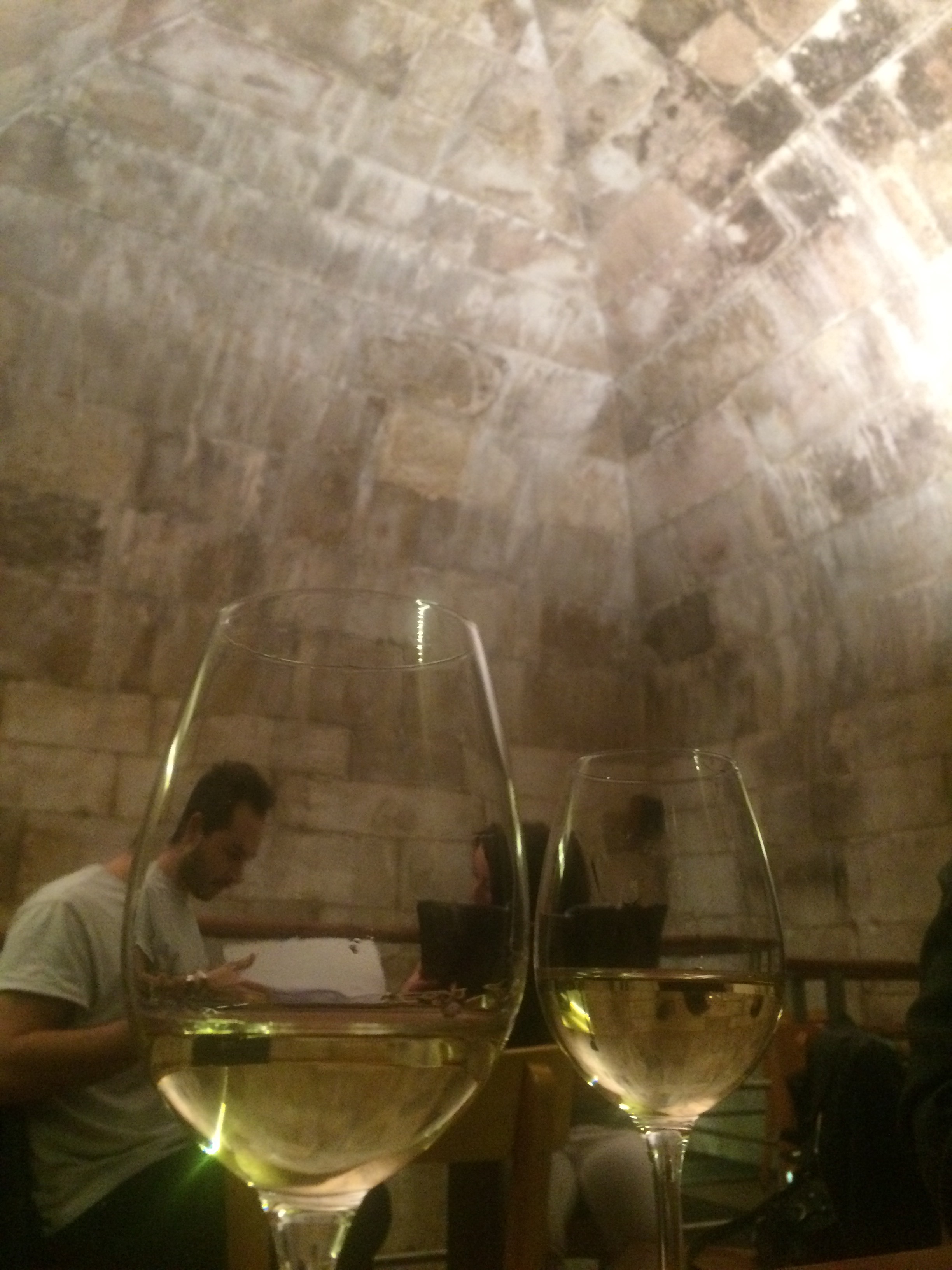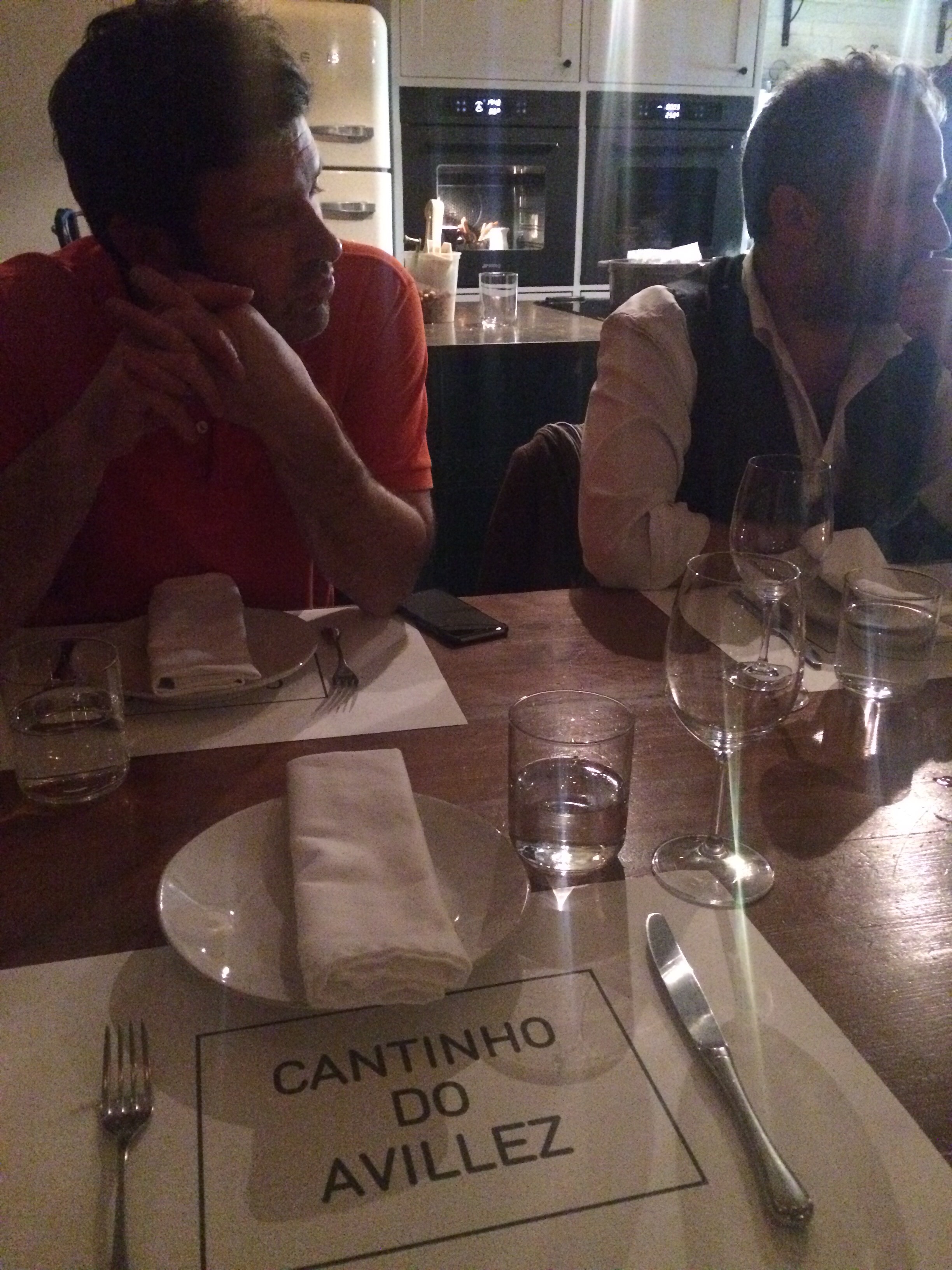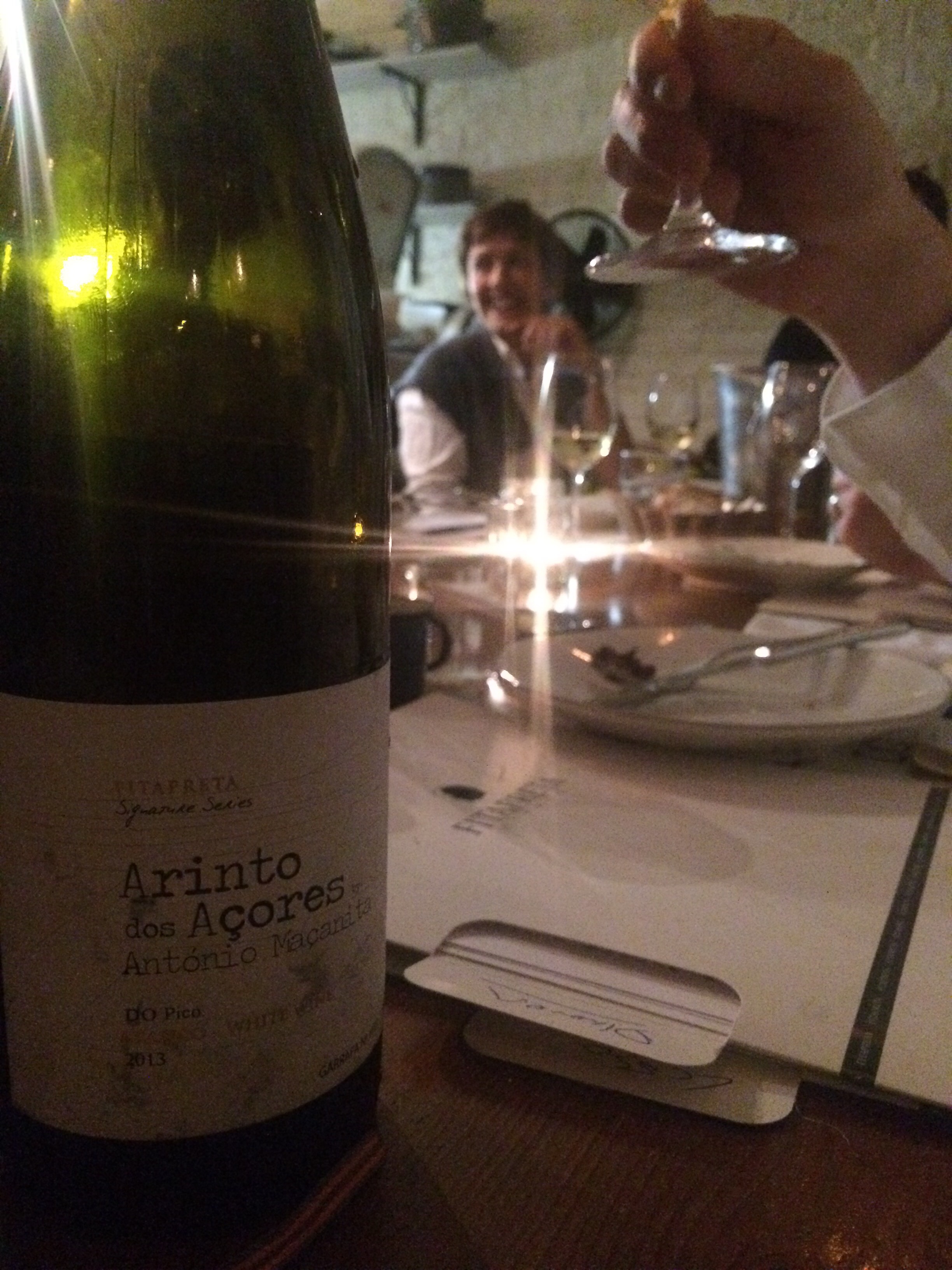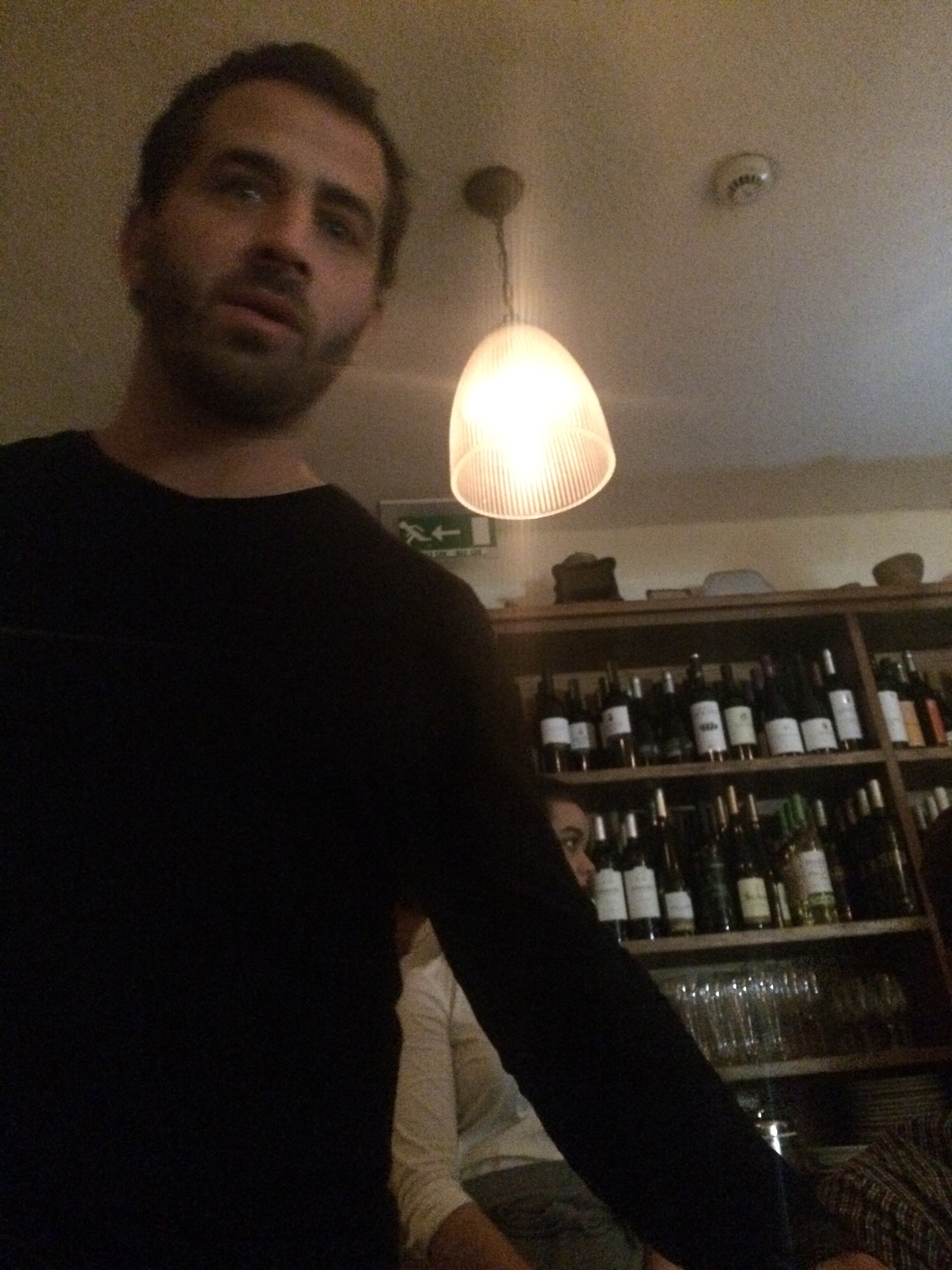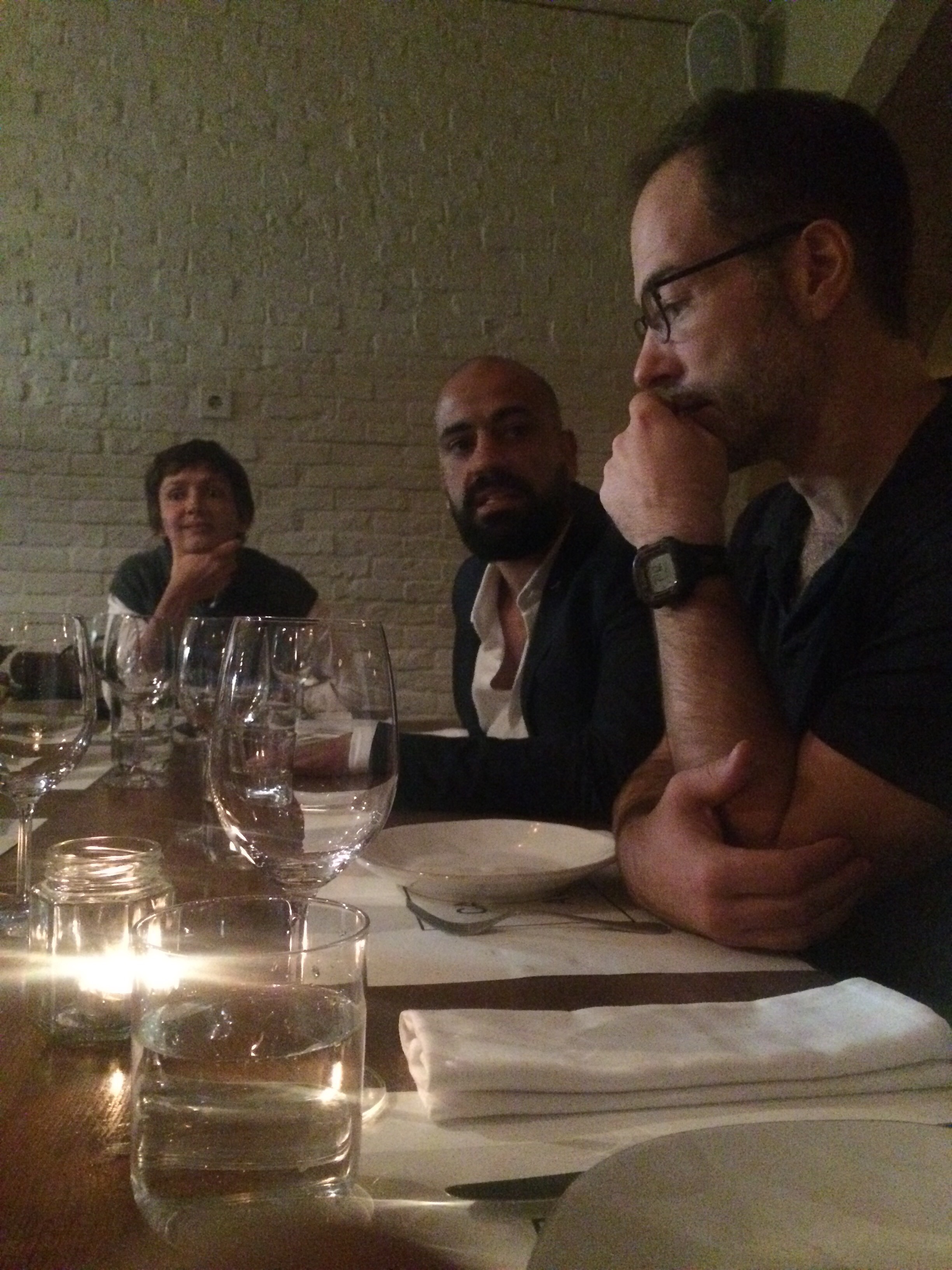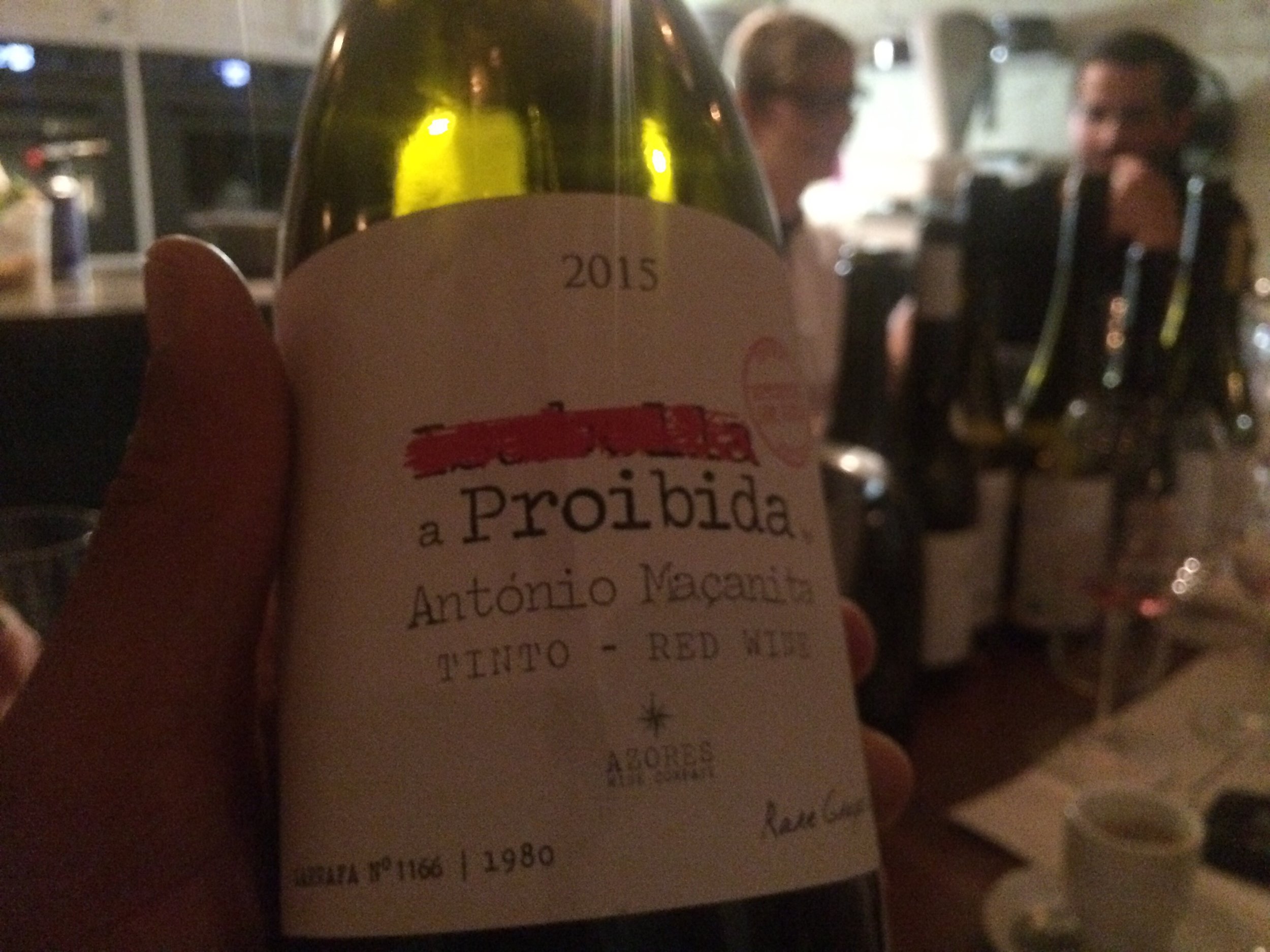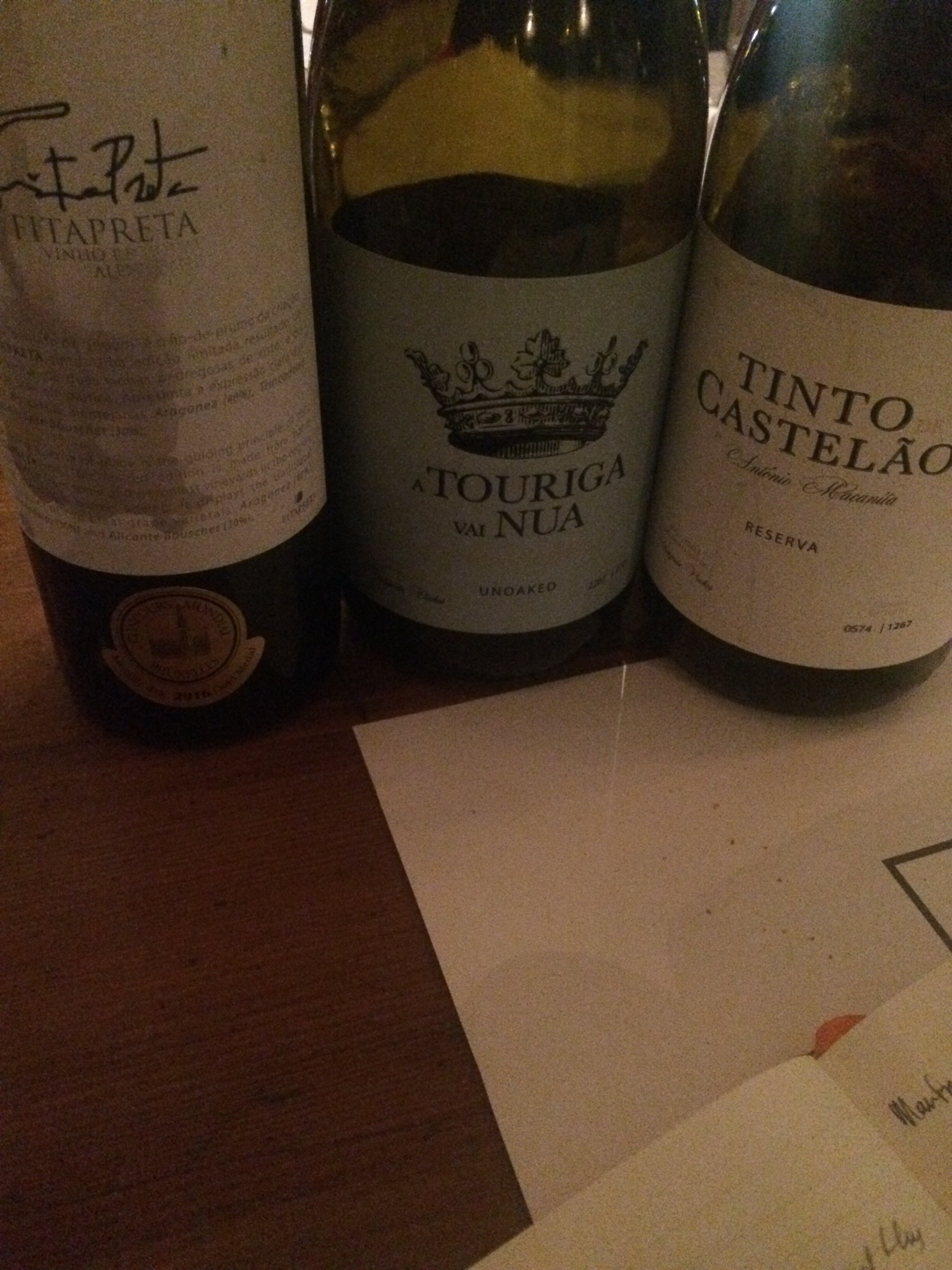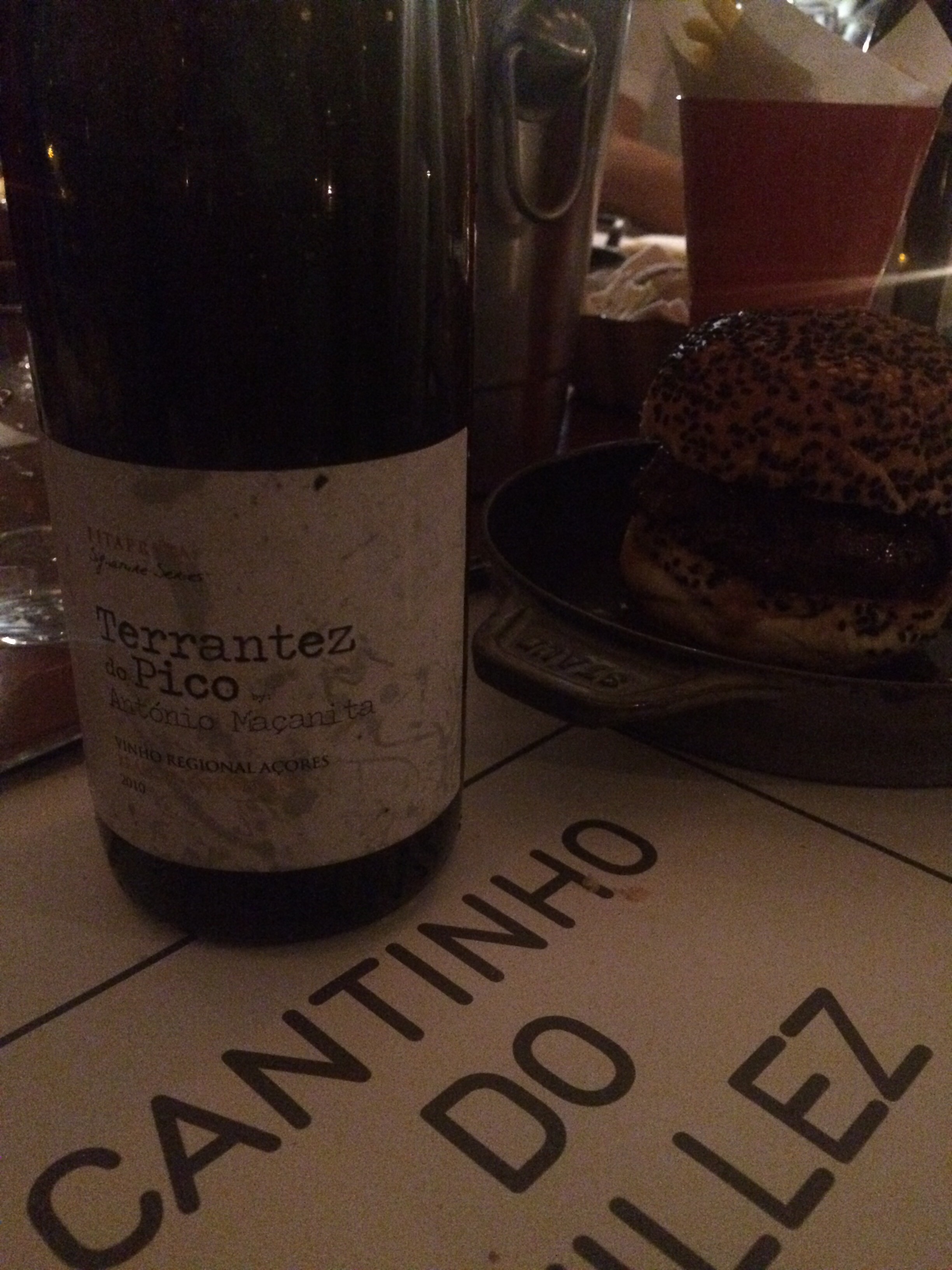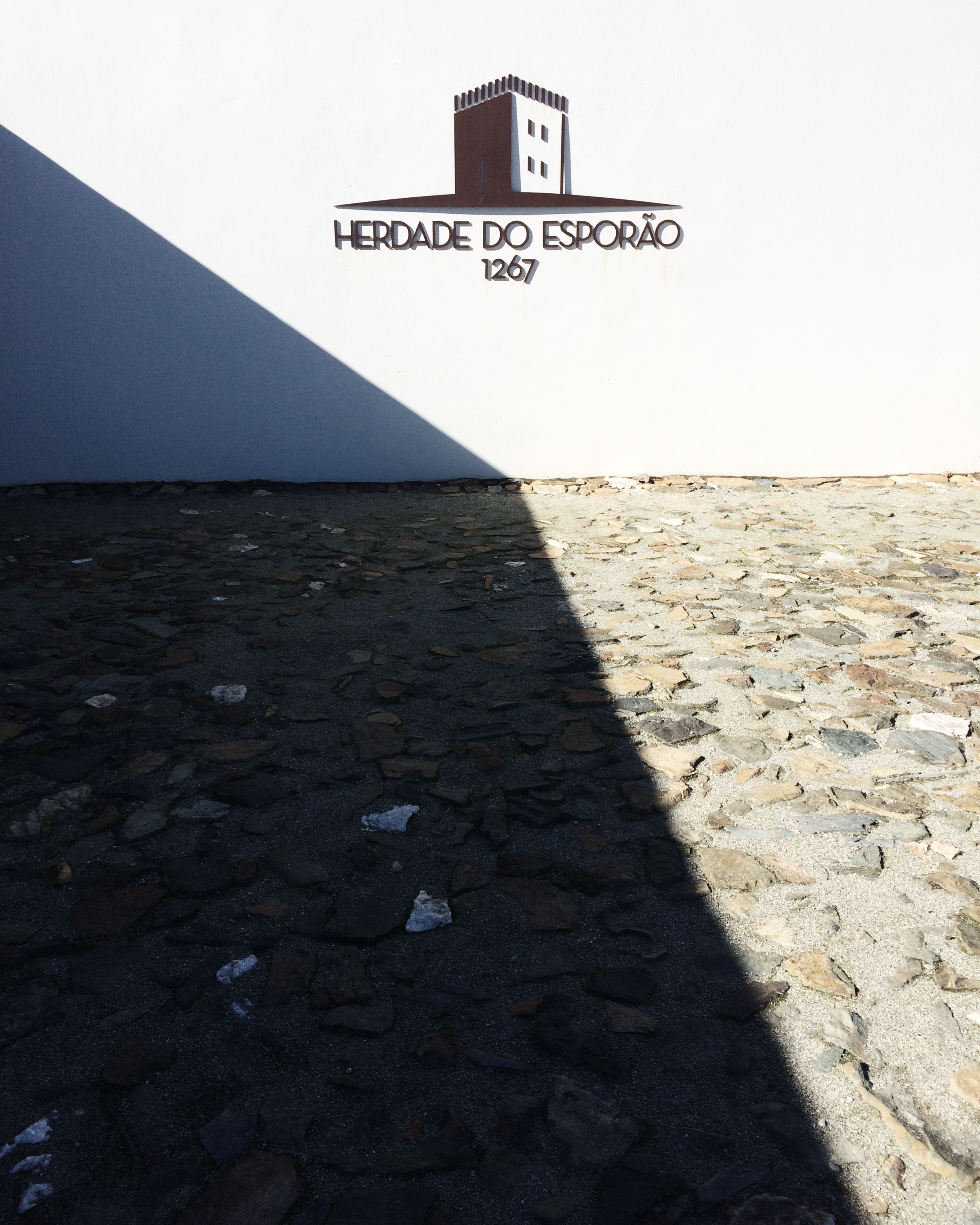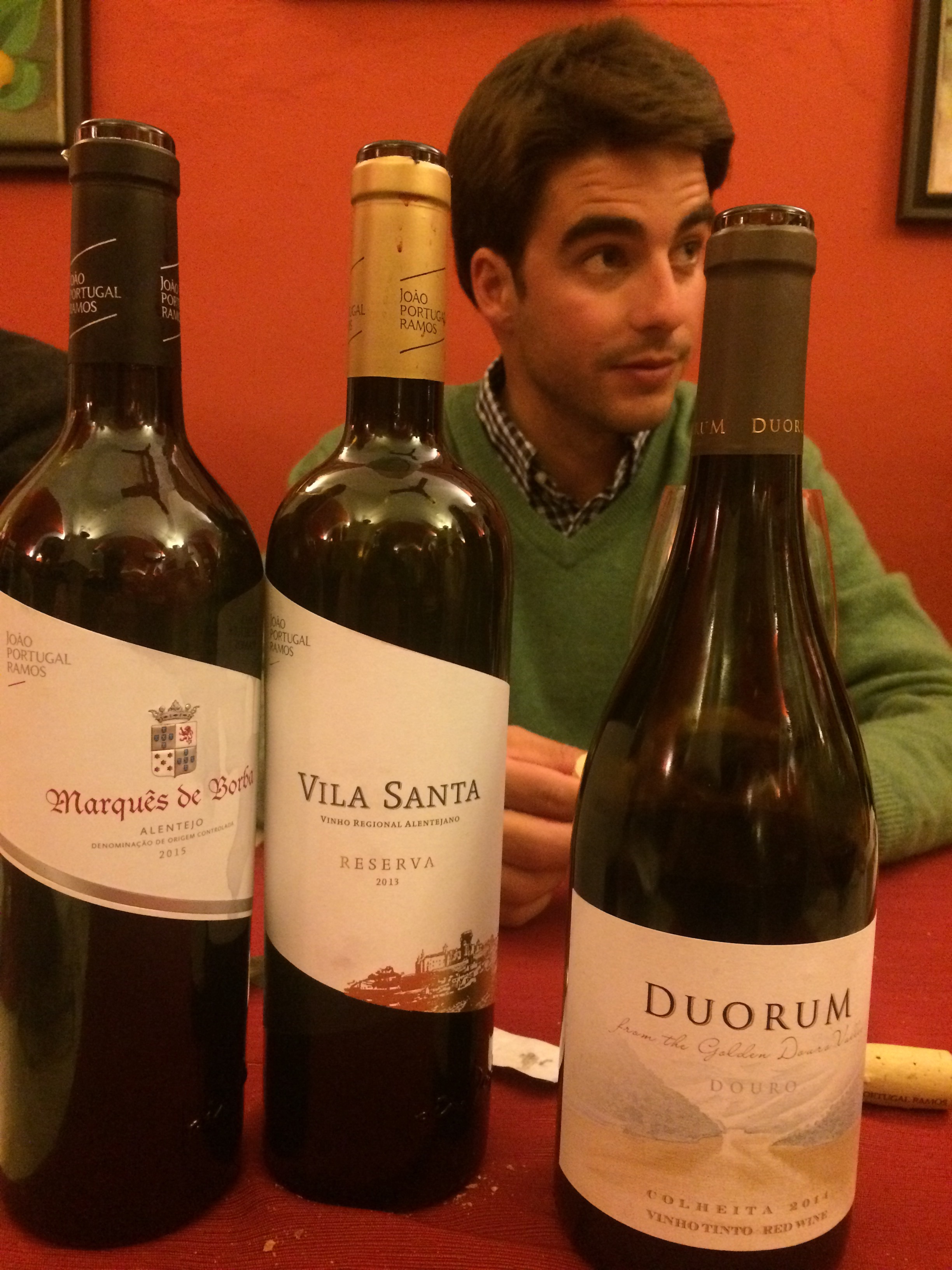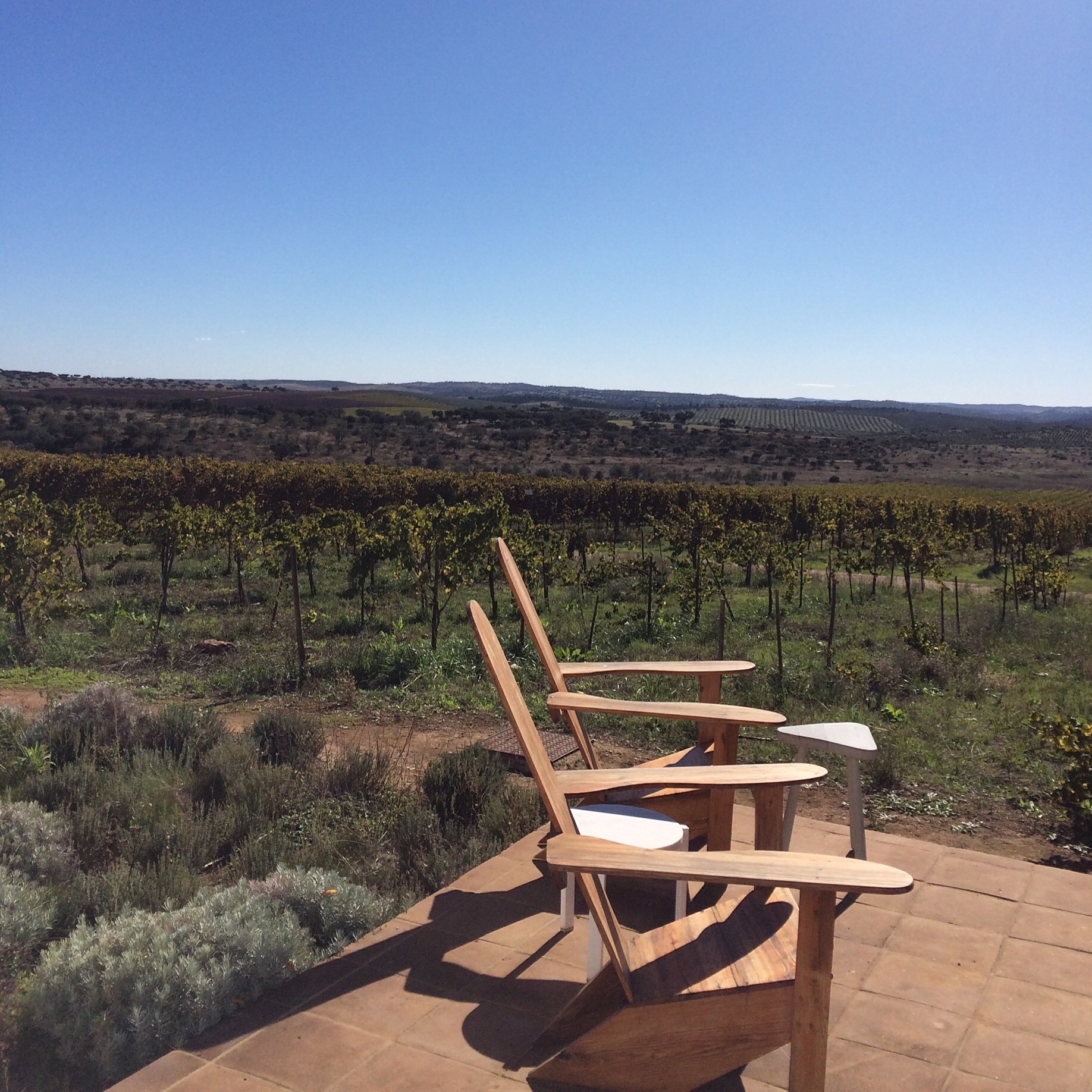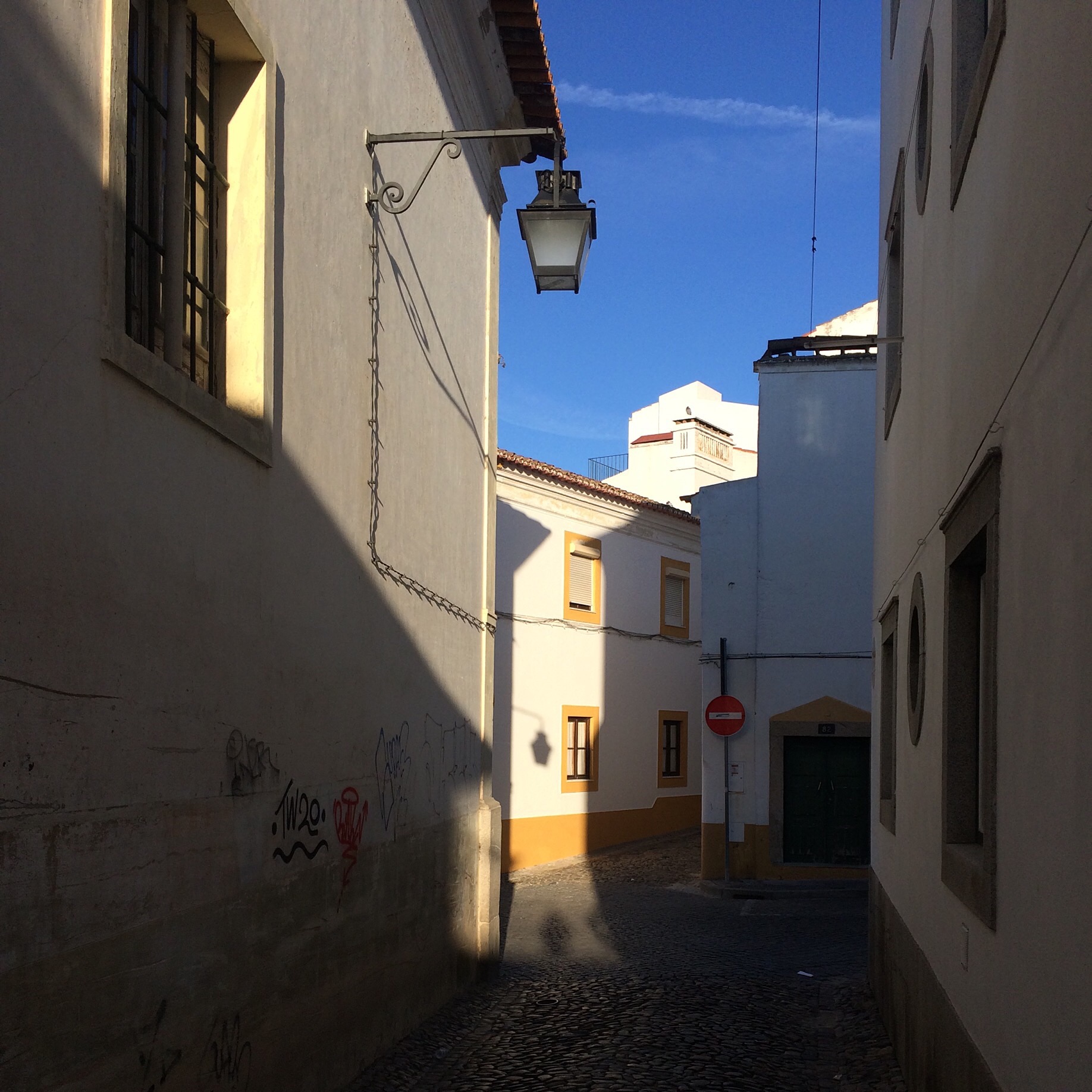2010 Terrantez de Pico IG Açores from the Sao Miguel Vineyard site.
Terrantez is an indigenous white variety which is a crossing between Verdelho and Bastardo. Originally planted from a massal selected vineyard, Antonio and his team are in the midst of recovering 47 hectares of the grape for which 27 hectares are currently farmed. As per the tasting of this wine, it was waxy, lemon and lime to green apple on the nose with a fresh butter tone. The palate gave way to a pleasant earthiness layered with sweet apple and pear, viscous round and rich.
2015 Terrantez de Pico IG Açores : The recent vintage of this wine was a clean and lean contrast to the evolved 2010. It was bright and bitter citrus on the nose with the briny to saline aroma. The palate was a mirror image of the nose with added layers of fresh citrus with savory herbal aroma. A profile I find quite often with maritime/mediterranean wines with high acid structure and tone. Only after a couple of hours do the hard edges soften to a smooth if not creamy citrus palate.
There are two Red wines from the Açores that Antonio also included in the tasting. Both of which have been available in Toronto through the agent Le Sommelier by Bernard Stramwasser. I have worked with both wines and have actually cellared one in particular for about 7 months now. That wine is the 2014 Isabella ai Proibida and will introduce it on our wine pairing menu in the coming days/weeks.
2015 Isabella a Proibida is indeed the name of the red grape involved in this wine, a Vinho di Chiero ( a scented wine) which I am quite taken to. It is a grape that is actually not fully recognized and permitted to make quality wine hence the scribble over Isabella (the forbidden) in the photo slide above. The aroma is of ripe and rich plum and currant but not jammed or wooded, with floral and pretty highlights supported by a gentle smokey herbal tint. To taste the wine dials all that back to hit you with lean and bright acid structure with some reference to toffee and toasted coffee, though only 20% of the wine sees oak on this wine. Insert garden herb and savouries. Overall an elegant and evolved wine. A highlight of the tasting and as I have recently revisited the 2014 this wine has a lot of promise for the Açores concept of Antonio's vision and wine program.
2015 Tinto Vulcanico IG a blend of unknown indigenous varieties. At this time of the tasting we were knee deep in wine and food and it was hard to get over the din of the busy and boisterous restaurant. Nonetheless my tasting notes continue with this fresh and ripe berry red with some tobacco, toasted coffee bean, then a herbal savoury edge. The palate could be considered 'brash' for the lack of sweet or pleasurable fruit. The wine overall was tart fresh, herbal and certainly a 'sensorial experience'.
THE ALENTEJANO WINES OF FITA PRETA Vinhos
The next series of wines takes us to Alentejo with the wines from the Fita Preta Vinhos. A project that began in 2004 with his then partner David Booth (1965-2012). Antonio's philosophy with all of his wines is to 'embrace history, knowing full well that one is in the present and needing to move forward, but not without understanding the past'
NOTE: all wines fall under the denomination of Vinho Regional Alentejano
BRANCO / WHITE
2015 Branca de Telha : is the amphora raised white wine made from the grapes of Roupeiro and Antâo Vaz. The grapes are whole bunch pressed, then filtered into 1000litre amphora, fermentation begins, and the wine continues in amphora for 28 days before being moved to stainless steel tanks. This process offers up a wine of floral to waxy fruit and earthy complexity on the nose, primarily peach and apple aroma of a semi-aromatic intensity giving way to a palate of waxy green and russet apple, with a touch of sweet stone fruit. I would call it a very approachable and user friendly amphora wine, not funky but fun enough as a primer.
2015 Fita Preta White : a combination of Antâo Vaz, Roupeiro and Arinto producing a rich and plush white wine. A wine displaying aroma of lemon and orange accented by white flowers. The palate is defined by a bright citrus, with pleasant mouthfeel and texture, almost a slight hint of tannin for a white wine that is entirely void of oak. A fun and sexy wine of good complexity.
2015 Palpite Branco : The term Palpite stems from Portuguese expression for a 'hunch' or a gut feeling, which is applied to the best grapes from separate blocks of Arinto, Antâo Vaz that will be chosen for this top wine. The red carpet treatment for this wine is 100% barrel ferment and ageing with battonage. The 2015 version of Palpite was initiated with a combination of controlled yeast and some natural, in 1/3 new oak with more than 1 year in barrel before bottling and future release. The hunch I get is that this wine offers the 'big' white wine drinker the opportunity to experience Portugal in a 'flavour comfort moment' with a unique and different set of varieties from the Portuguese south, that isn't chardonnay. in fact I don't think I've ever had a Chardonnay from Portugal! The 2015 Branco is rich, with honeyed apple, with of course the classic vanilla like aroma that only oak provides, though a combination of peach and apricot pastry flavours is very pleasing. This wine needs time for all that power to come into balance. Otherwise it is a well made wine, though not my style.
TINTO / RED
2014 Fita Preta Red : a combination of Aragonez (aka Tempranillo, aka Tinto Roriz), plus Trincadeira, and Alicante Bouschet presented as the classic wine for the Fita Preta brand. Initial aroma of black and blue fruit, with ripe currant, moving to mineral toned yet modern floral and rich vanilla tones. Almost Christmas candy like with orange rind and dark cherry though remaining fresh. The palate offers up ripe black and blue fruit, nice toasted vanilla and coffee with a tell tale streak of acidity produced by the vibrant grape Trincadeira. Chill!
2015 Touriga vai Nua : a conceptual expression of Touriga Nacional with no oak influence at all. Touriga 'Nude'. The wine is fleshy and bright with red berry to apple skin - breakdown to strawberry and cotton candy, with sweet coffee cream. The palate continues this theme with lean fresh and tart structure that skips to some plum and rich red fruit and then switches back to orange, bergamot and white pepper. As you can read by the notes the pleasure factor is high on this wine and would satisfy a wide spectrum of wine lovers.
2014 Tinto Castellão : now, Castellâo is a red grape primarily found in the Setubal and Tejo regions. Castellâo has been used to make light and fresh wines though it can be made into a full bodied and age worthy red. A close comparison might be the way the new world public looks at Merlot?!? So what Fita Preta has produces is a wine of pleasure with candy raspberry and bramble fruit dominating, with a little smoked hickory, coconut and vanilla added. It would classify this as a light to medium bodied wine with savoury notes and sour cherry and raspberry on the palate. The wine is made with 30 days of maceration / 12 month in barrel / 12 month in bottle. So yes, Antonio is taking his time to make a precise expression of this once thought of as a simple grape Castellão.
2014 Palpite Tinto : consists of the mighty Aragonez, Alicante Bouchet and Touriga Nacional. This wine aromatically is all black cherry and rich red berry fruit, layered with rich and full aroma of vanilla and spice. The beauty of full bodied reds from Alentejo when done right is that instead of going jam- jammy, the wines kick in with some great structure and acid, call it freshness. This wine will hit all the pleasure spots flavour-wise with rich ripe fruit, dark red and forest berry then slap you in the face with some food friendly acid to balance everything out. This wine is certainly the Rolls Royce of the portfolio.
Yes and that was not all we tasted that evening, though I do feel that sums up the key elements of the Antonio Maçanita Azores/Fita Preta arsenal of wines. Dinner and tasting with this energetic personality was certainly the best way to break the ice on what would be my third tour of Portugal.
NEXT: ALENTEJO - A PORTUGUESE WINE DIARY - PART 2 WILL TAKE ME INTO THE HEART OF ALENTEJO WITH THE WINES OF ESPORÃO AND JOÃO PORTUGAL RAMOS.











